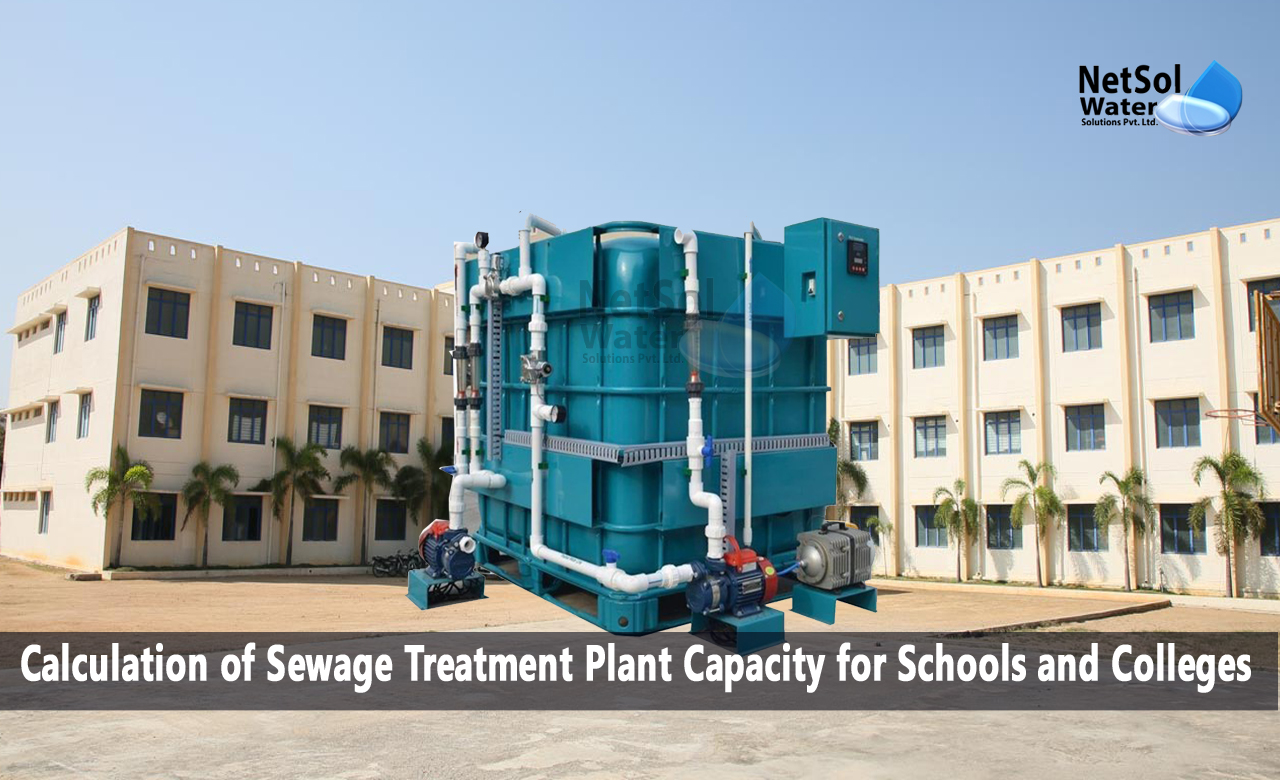How to calculate of STP Plant capacity for School & Colleges?
Sewage treatment plants (STPs) are essential systems in schools and colleges for treating wastewater before discharging it into the environment. These STPs must have a sufficient capacity to handle the amount of wastewater generated by the institution.
Now, we will discuss how to calculate the sewage treatment plant capacity for schools and colleges, share the per-user water discharge, and calculate the requirement in detail as per the Indian Pollution Control Board.
CPCB Guidelines:
According to the Central Pollution Control Board (CPCB), the guidelines for per capita use of water and wastewater generation for schools and colleges are as follows:
· Per-Capita Water Consumption:
Before we dive into the calculation of STP capacity, let's first understand the per-user water discharge in schools and colleges. The per-user water discharge is the amount of wastewater generated by a single person in a day. According to the Indian Pollution Control Board, the per-user water discharge in schools and colleges is 45 liters per day (Lpd).
· Per –Capita Waste Water Generation:
The per capita wastewater generation for schools and colleges is 80% of the water requirement, i.e 36 lpd.
· The wastewater generated from schools and colleges should be treated in a sewage treatment plant (STP) of adequate capacity and design, as per the CPCB norms.
· The treated wastewater from schools and colleges should be reused for gardening, flushing, cooling towers, etc., as per the CPCB guidelines.
· The excess treated wastewater from schools and colleges should be discharged into a sewer or a water body, after meeting the prescribed standards1.
These are some of the general guidelines for per capita use of schools and colleges. However, they may vary depending on the specific requirements and regulations of each institution.
Calculation of STP Capacity
The capacity of an STP depends on the number of users or students in the institution, the per-user water discharge, and the BOD (biochemical oxygen demand) and COD (chemical oxygen demand) levels of the wastewater. The BOD and COD levels indicate the amount of organic and inorganic pollutants present in the wastewater.
Steps:
Here's how we can calculate the STP capacity for schools and colleges:
Step 1: Determine the total number of users or students in the institution. Let's assume that the institution has 1000 students.
Step 2: Calculate the total water consumption of the institution.
According to the CPCB, the average water consumption per person per day in schools and colleges is 45 L/d.
Therefore, the total water consumption of the institution would be:
Total water consumption = 1000 x 45
= 45,000 L/d
Step 3: Calculate the total wastewater generated by the institution.
As per the per-user water discharge, the total wastewater generated by the institution would be 80% of Total Water Consumption:
Total wastewater generated = 1000 x 45 x 0.8
= 36,000 L/d
Step 4: Calculate Peak Flow Generation:
Peak Flow rate is 1.2 times the normal rate, i.e.
Peak Flow Generation = 36,000 x 1.2 L/d
= 43,200 L/d
Step 4: Calculate the BOD and COD levels of the wastewater.
The BOD and COD levels of the wastewater depend on the activities carried out in the institution. For schools and colleges, the BOD and COD levels are usually in the range of 250-350 mg/L and 500-600 mg/L, respectively. Let's assume that the BOD and COD levels of the wastewater are 300 mg/L and 550 mg/L, respectively.
Step 5: Calculate the STP capacity using the following formula:
STP capacity = (Total wastewater generated x BOD level x Safety Factor) / (24 x BOD load x MLSS x MLVSS) *
Where,
BOD load = BOD level / per-user water discharge
MLSS = Mixed Liquor Suspended Solids (mg/L)
MLVSS = Mixed Liquor Volatile Suspended Solids (mg/L)
Safety Factor = 1.5-2 (depends on the type of STP)
Assuming the safety factor to be 1.5, the STP capacity would be:
STP capacity = (43,200 x 300 x 1.5) / (24 x (300/45) x 3000 x 2000)
= 50.4 KL/d
Therefore, the STP capacity required for the institution would be 42 kiloliters per day (KL/d).
Conclusion:
In conclusion, the calculation of STP capacity for schools and colleges involves determining the total number of users, per-user water discharge, BOD and COD levels, and safety factor. The capacity of the STP should be sufficient to handle the amount of wastewater generated by the institution and treat it to the required standards before discharging it into the environment.
Leading manufacturer of sewage treatment plants in India.
Netsol Water is the leading manufacturer, supplier, and exporter of a quality selection of water treatment, and wastewater treatment products in India, by using advanced sewage treatment methods.
RO plants, water softeners, ETPs, STPs, DM plants, AMC, O&M, Ultra filtration, UV, Ozonation, ZLD plants, Anoxic tanks, and other goods and services are available from us. We also provide services to businesses in sectors including automotive, pharmaceutical, textile, pulp & paper, beverages, refineries, schools, hospitals, office buildings, and hotels, among others.
Call us at +91 9650608473 or email at enquiry@netsolwater.com for further information.



